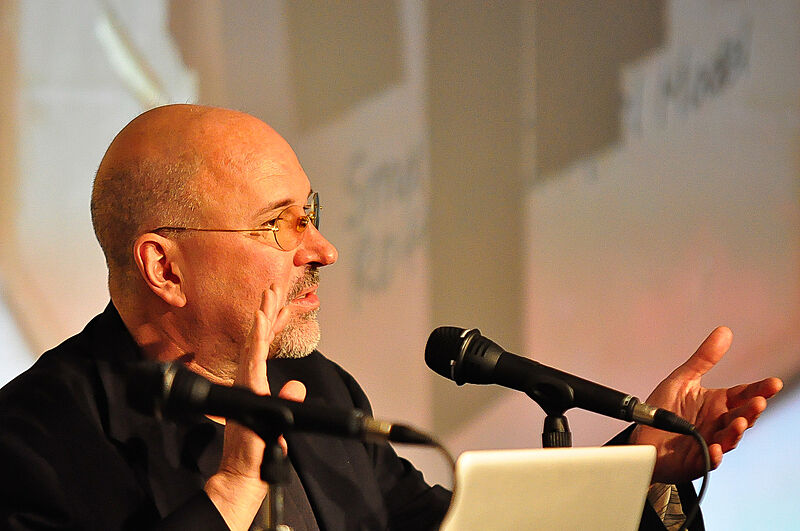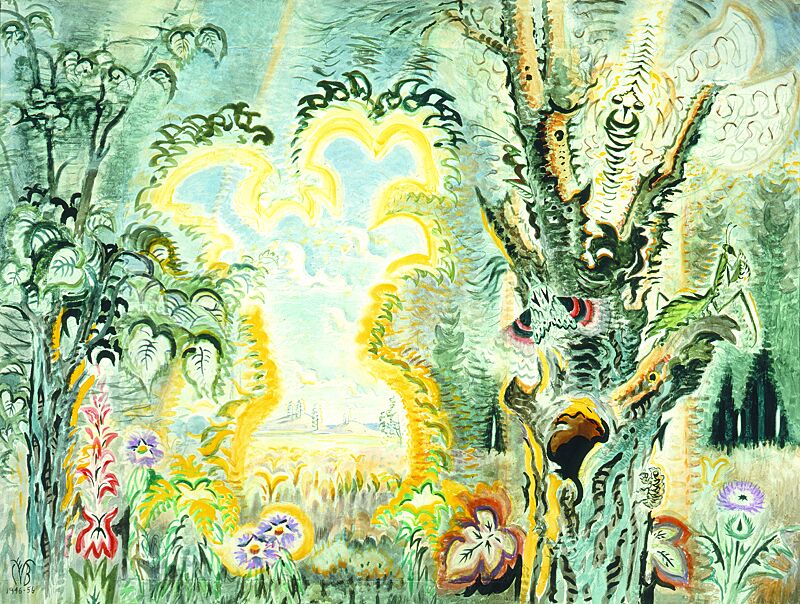Artist as Curator: Robert Gober on Charles Burchfield
Oct 14, 2010
Heat Waves in a Swamp: The Paintings of Charles Burchfield is artist Robert Gober’s first curated exhibition of another artist’s work. On September 15, Gober talked with Donna De Salvo, Chief Curator and Deputy Director for Programs, about how he delved into Burchfield’s personal history and strove to communicate the artist’s varied life experiences.
Gober decided to organize the exhibition chronologically because Burchfield’s career spanned several decades and encompassed two world wars: “I wanted to explore the changing fortunes of an artist and the different places your career takes you.” Gober recalled how he traveled to the artist’s childhood home in Salem, Ohio and immersed himself in the artist’s archives now kept at the Burchfield Penney Art Center in Buffalo, New York. He eventually read over 700 pages of Burchfield’s handwritten journals—there are 10,000 pages in total. (Gober wanted to include these journals in the exhibition, but the Burchfield Penney Art Center was reluctant so he painstakingly reproduced them.)
Reading the journals, Gober explained, revealed that although the artist enjoyed considerable acclaim, he was also fraught with personal doubt and frustration. Success allowed Burchfield to support his family and devote himself to his art, but it also brought pressures the artist resented. Gober noted that Burchfield hated being pigeonholed as an American Scene painter by his contemporaries: “He called it ‘libel.’” “He described his fame as a prison,” Gober said, and regretted “that he had to exhibit and sell his work in order to keep it going.” Burchfield’s ambivalence about his fame resonated with Gober, who revealed his own concerns about critical success: “You lose something when you exhibit your work in public. There’s something that gets taken away from you as an artist. He talked about it and I intuitively understood what he meant. Burchfield felt he was capable of so much more, but how do you change and experiment when you are in a lucky position like that?”
Gober then talked about how Burchfield emerged from his creative crisis. During World War II, Gober explained, the art market retreated, which, ironically, freed Burchfield to experiment and reinvent himself. “What he was looking for was that feeling of inspiration. Because when you are inspired you know it. He went back to his drawings of 1917—when he did feel inspired—and literally pasted them onto bigger boards to expand them.” Gober explained that although it required diligent efforts to find and reconstruct these early experimental works, he was determined to include them in the exhibition. “I wanted to present visually what Burchfield did,” Gober said, “and show how this technique worked. Because these are the works, by his own admission, that got him out of his crisis and allowed him to make art for the next twenty years.”
By Alix Finkelstein, Education Intern


